University of Chicago students Nathan Leopold and Richard Loeb decided to kill a boy just to prove that they could get away with it. They were wrong.
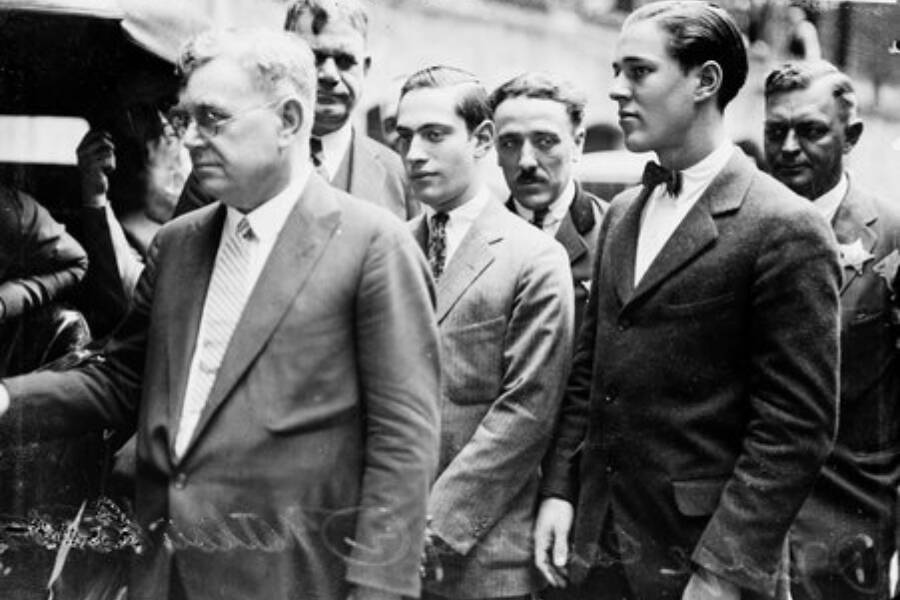
Chicago History Museum Nathan Leopold (middle), Richard Loeb (right), and Judge John R. Caverly (left).
The dream of pulling off the “perfect crime” has long fascinated criminologists. The idea that someone could get away with something without every getting caught seems almost impossible. After all, if there is a record of the perfect crime, had it really been the perfect crime ?
In 1924, Nathan Leopold, 19, and Richard Loeb, 18, kidnapped and murdered 14-year-old Robert Franks in Chicago — simply to prove that they could get away with it.
Unfortunately for the hopeful duo, Leopold and Loeb would quickly be caught for the crime and sentenced to life in prison during the trial of the century.
The Fateful Meeting Of Nathan Leopold and Richard Loeb
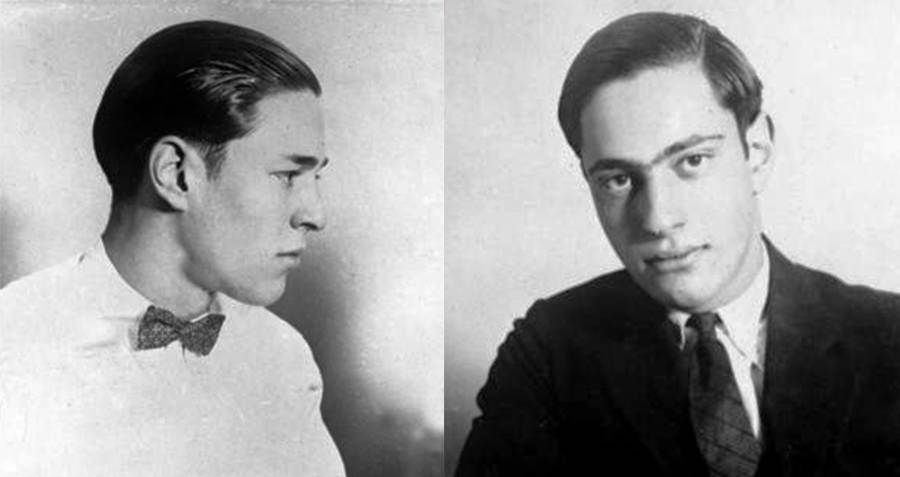
Wikimedia CommonsRichard Loeb and Nathan Leopold.
Nathan Leopold was born on November 19, 1904, in Chicago, Illinois to his parents Florence Foreman and Nathan Leopold Sr., the president of the Manitou Steamship Company and owner of Morris Paper Mill in Morris, Illinois.
Leopold grew up in an affluent primarily Jewish suburb in Chicago. His childhood was marked with privilege and excellence. At only 19 years old, Leopold already had an undergraduate degree from the University of Chicago and a published study about warblers, a type of bird native to Michigan.
Richard Loeb shared a similar background, growing up in the same suburb of Chicago and attending the University of Michigan where he received an undergraduate degree at only 17 years old.
The two met while attending the University of Chicago and became close friends and lovers. Both of them also expressed interest in committing the perfect crime. Nathan Loeb had developed an interest in detective stories and law and was planning to attend Harvard after graduating.
Richard Leopold was interested in psychology, particularly the concept of Übermenschen (“Supermen”) put forth by German philosopher Friedrich Nietzsche. Nietzsche suggested that there were certain members of society who were transcendent, had extraordinary abilities, and possessed a superior intellect.
Soon, Leopold became convinced that he was one of these supermen, and as such was not bound by the laws or ethics of society. Eventually, he convinced Loeb that he was one too.
In order to test their perceived immunity, the two began committing petty theft. They broke into a fraternity house at their university to steal a typewriter, a camera, and penknives. When that got no attention in the press, the duo moved on to arson.
When that too was ignored by the media, Leopold and Loeb decided they needed a larger crime, a perfect crime, one that would gain national attention. One that would prove deadly for 14-year-old Bobby Franks.
The Abduction And Murder Of Bobby Franks
By the end of 1923, Leopold and Loeb started discussing their plan for kidnapping and murder, ultimately spending seven months planning the crime. After all, everything had to be perfect.
They had planned the way they would kidnap and murder their victim, the way they would dispose of the body, the ransom they would demand, and how they would demand it. All they needed was a victim.
When they spotted fourteen-year-old Bobby Franks walking down the street, Leopold and Loeb knew they had found the perfect victim.
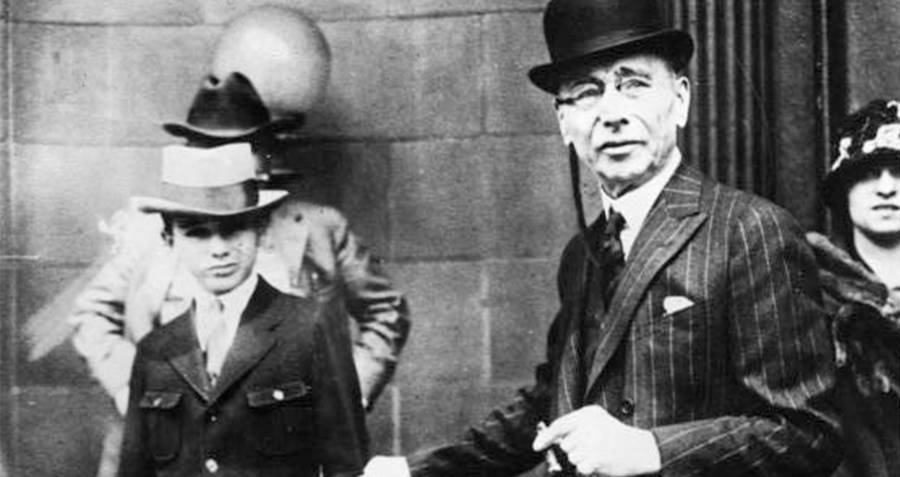
Wikimedia CommonsBobby Franks, left, with his father.
Bobby Franks was the son of a wealthy watch manufacturer, as well as Loeb’s second cousin and neighbor. The duo knew that his father would pay a ransom.
Leopold And Loeb tracked his movements for weeks, planning out every detail of the attack. Then, on May 21, 1924, they put their deadly plan into action.
They rented a car under a false name and followed Bobby home from school, stopping to offer the boy a ride. He accepted under the guise of discussing his new tennis racket.
As Bobby sat in the front seat next to Leopold, Loeb hid in the back seat holding a chisel. He struck Bobby in the head several times, then dragged him to the back and gagged him. Bobby Franks died in the car.
They stuffed his body on the floor and drove to Wolf Lake, 25 miles outside of Chicago. They removed Bobby’s clothes, hiding the body in a culvert near the railroad tracks. They poured hydrochloric acid on his face and a scar on his stomach that could be used to identify him.
Then they left, driving back to Chicago as if nothing had happened. They mailed a ransom note, burned the typewriter used to write it, and lived their lives as usual.
Then, a few days later, to Leopold’s and Loeb’s dismay, a local man found Bobby Franks’ body. An intensive investigation was launched, which turned up a pair of glasses belonging to Richard Loeb at the scene.
The Beginning Of Leopold And Loeb’s Downfall
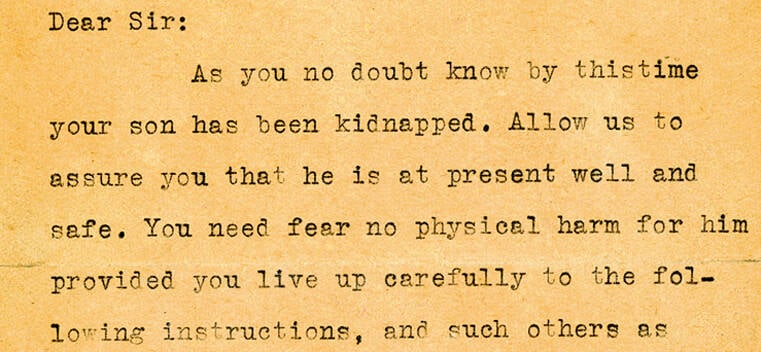
Northwestern University A part of the ransom note send to Bobby Franks’s father.
Once police discovered the glasses, it was game over for Leopold and Loeb.
The glasses contained a particular kind of hinge that had been sold to only three people in the Chicago area — one of whom was Nathan Leopold. When questioned by police, he said he may have dropped them during a recent birdwatching trip. The police then discovered the remnants of Leopold and Loeb’s burned typewriter used to write the ransom note in a nearby pond and brought them in for formal questioning less than a week after the murder.
Richard Loeb folded first. He claimed that Leopold had planned everything, and had been the murderer. Nathan Leopold told police it was his plan, but that Loeb had been Bobby Frank’s killer.
They both ultimately admitted that their motive had simply been the thrill, blaming their behavior on their superman delusions and their need to commit the perfect crime.
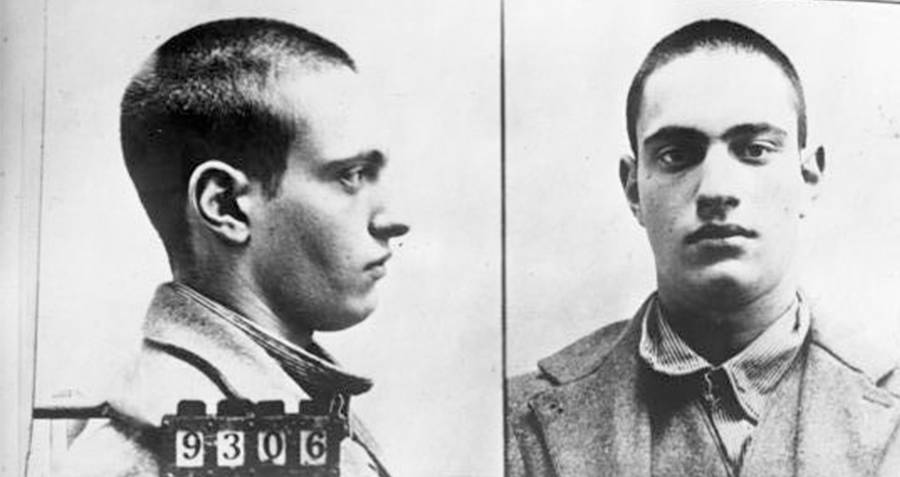
Wikipedia CommonsNathan Leopold’s mug shot.
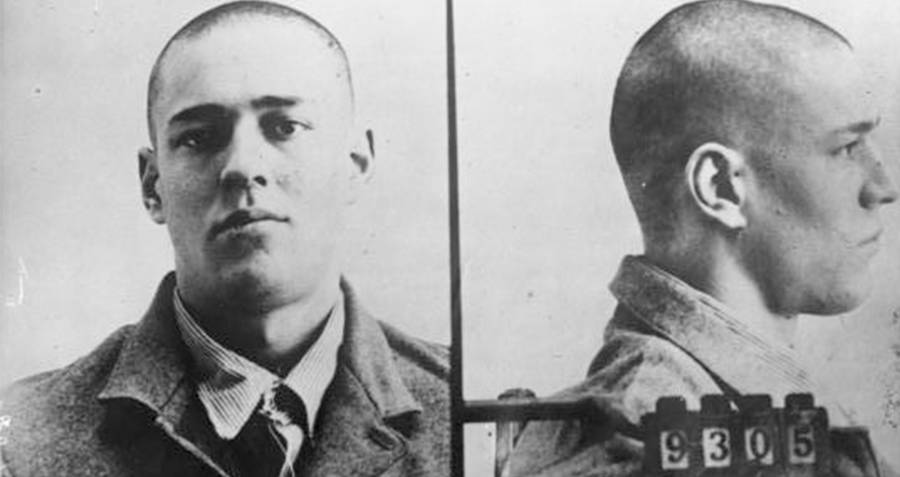
Wikimedia CommonsRichard Loeb’s mug shot.
The Trial Of The Century Results In The Duo’s Imprisonment
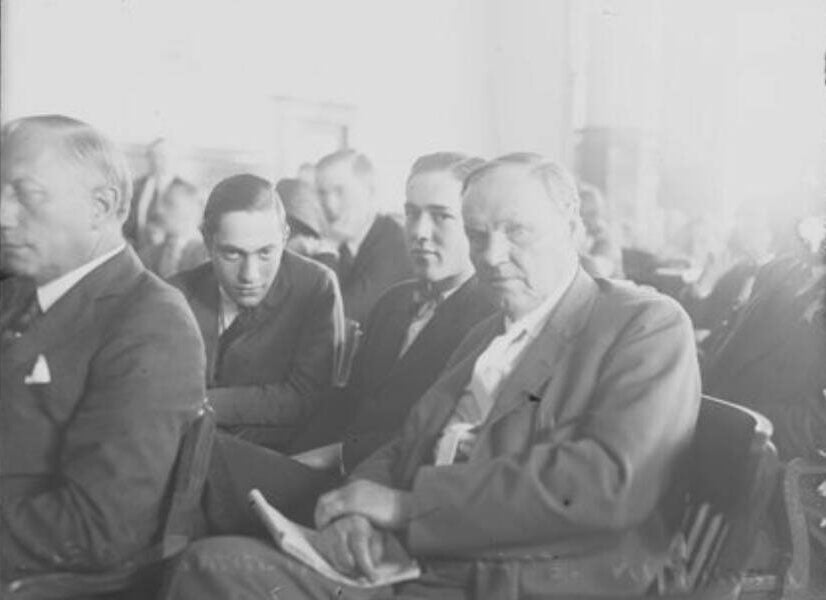
Chicago History MuseumLeopold, Loeb, and their attorney, Clarence Darrow, during the trial.
The trial that ensued drew the attention of the country, and became the third trial to be deemed “The Trial of the Century.” The Loeb family hired none other than Clarence Darrow, famous for his opposition to capital punishment.
During the trial, which was actually a sentencing hearing given that they had both confessed and entered guilty pleas, Darrow made a 12-hour-long closing argument, begging the judge not to execute Leopold and Loeb. The speech has been hailed as the finest of his career.
The trial included over 100 witnesses, including psychiatrists attesting to the duo’s developmental abnormalities and trauma. According to Leopold’s defense team, the boy’s governess had sexually abused him. In Loeb’s defense, the team brought up parent neglect as a factor in the boy’s violent behavior.
And ultimately, the defense was successful. On September 10, 1924, the judge sentenced Leopold and Loeb to life in prison, plus 99 years, to be served immediately. He cited the boys’ age as the reason for not handing them a death sentence.
Both Nathan Leopold and Richard Loeb were sent to Joliet Prison in Illinois. A year later, prison officials transferred Leopold to the Stateville Penitentiary for an emergency surgery.
There, Leopold expanded the prison school system, adding high school and college courses to the curriculum. Prison officials transferred Loeb to the same prison a year later, and the duo worked together to make lesson plans and teach courses.
The Death Of Richard Loeb And The Fate Of Nathan Loepold
On January 28, 1936, Loeb was fatally attacked with a straight razor by fellow inmate James Day. Day claimed that Loeb had sexually propositioned him in the shower room. The headline from the Chicago Daily News reporting on Loeb’s death read: “Richard Loeb, a brilliant college student and master of the English language, today ended a sentence with a proposition.”
However, Loeb had dozens of defensive wounds on his body and his throat had been slashed from behind. This type of attack was not consistent with the story Day told. Regardless, a jury found Day not guilty of the crime in June 1936.
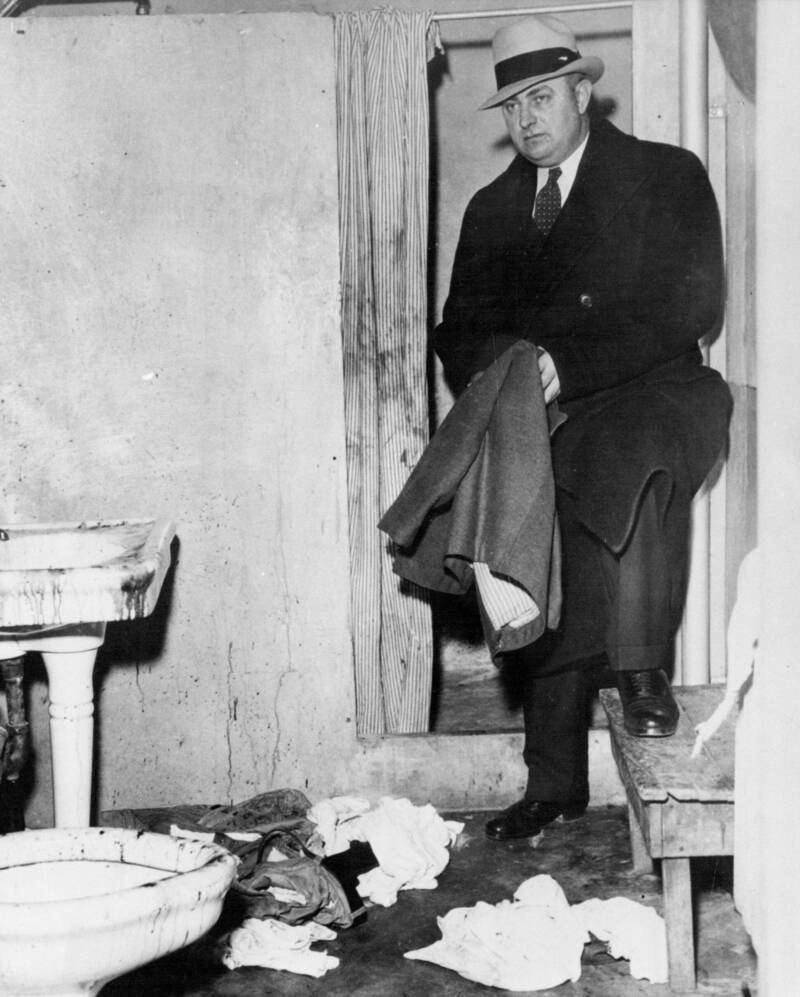
SuperStock/Alamy Stock PhotoWarden Joseph E. Ragen of Stateville Penitentiary views room where Richard Loeb was fatally slashed by fellow convict, James Day.
After his friend’s death, Leopold reportedly suffered from intense bouts of depression. He managed his mental health struggles by pouring his efforts into improving the prison system.
Leopold continued to teach classes and took on new roles such as creating and managing the prison library and volunteering in the prison hospital.
In 1944, Leopold even volunteered to participate in human trials for malaria treatments. He later went on to publish his autobiography titled Life Plus 99 Years in 1958.
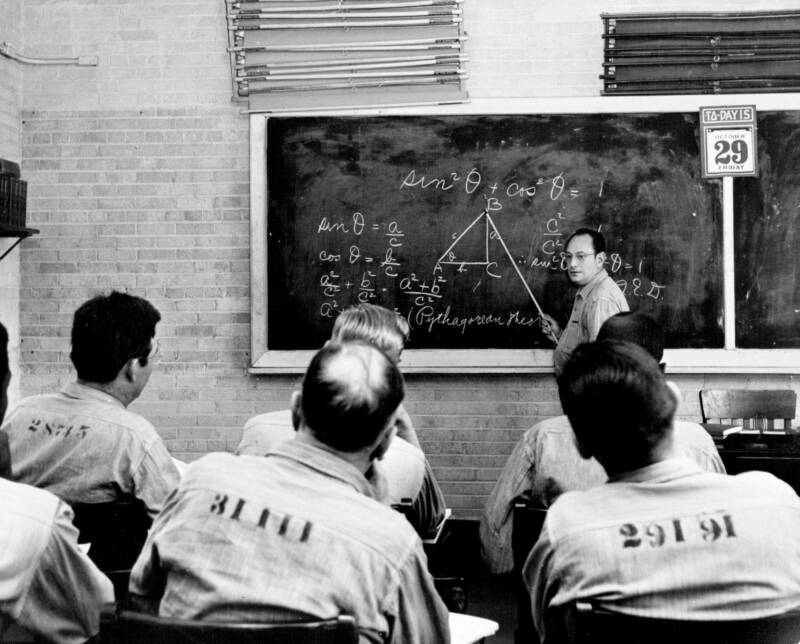
SuperStock/Alamy Stock PhotoNathan Leopold teaching trigonometry in prison on June 20, 1955.
But Nathan Leopold wouldn’t remain behind bars forever. Because of his good behavior and good deeds in prison, a parole board approved his release on March 13, 1958.
Upon his release, Leopold used the profits from his autobiography to start a foundation to help emotionally disturbed youth. He later moved to Puerto Rico and got his master’s degree from the University of Puerto Rico.
There, Leopold found his new normal. He married a widow on February 5, 1961, and even began researching and advocating for native bird populations.
Nathan Leopold lived out the rest of his days on the island, dying from a diabetes-related heart attack at 66.
Though the perfect crime hadn’t been pulled off, Leopold and Loeb remained infamous in criminology history for their attempt and the countless copycats, books, and movies it inspired.
In his own words, Nathan Leopold reflected on what he had done in his autobiography.
“Looking back from the vantage point of today, I cannot understand how my mind worked then. For I can recall no feeling then of remorse. Remorse did not come until later, much later. It did not begin to develop until I had been in prison for several years; it did not reach its full flood for perhaps ten years. Since then, for the past quarter century, remorse has been my constant companion. It is never out of my mind. Sometimes it overwhelms me completely, to the extent that I cannot think of anything else.”
After this look at Leopold and Loeb, read the story of Rodney Alcala, the dating game killer. Then, read the story of how Larry David saved a man from being wrongly convicted of murder.





